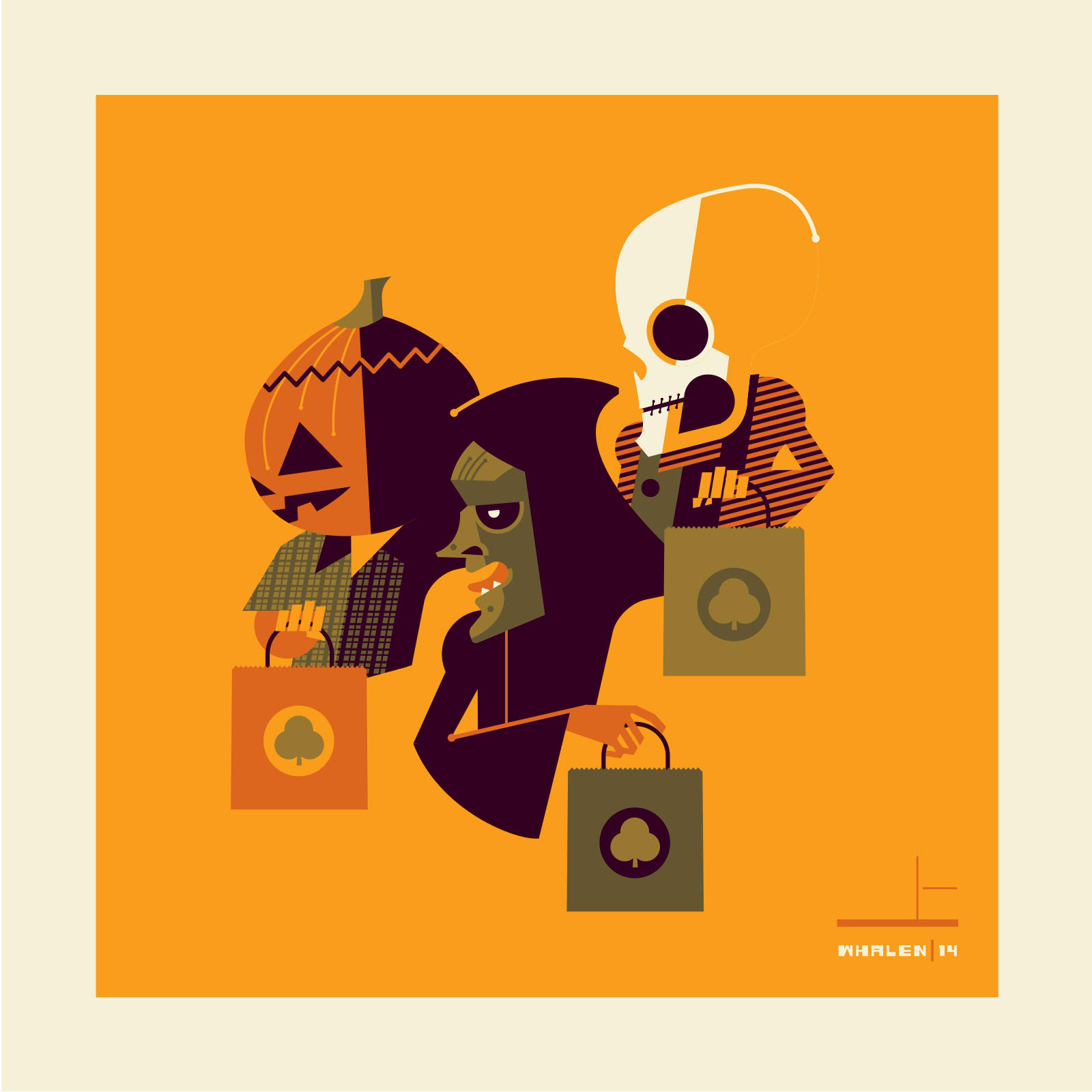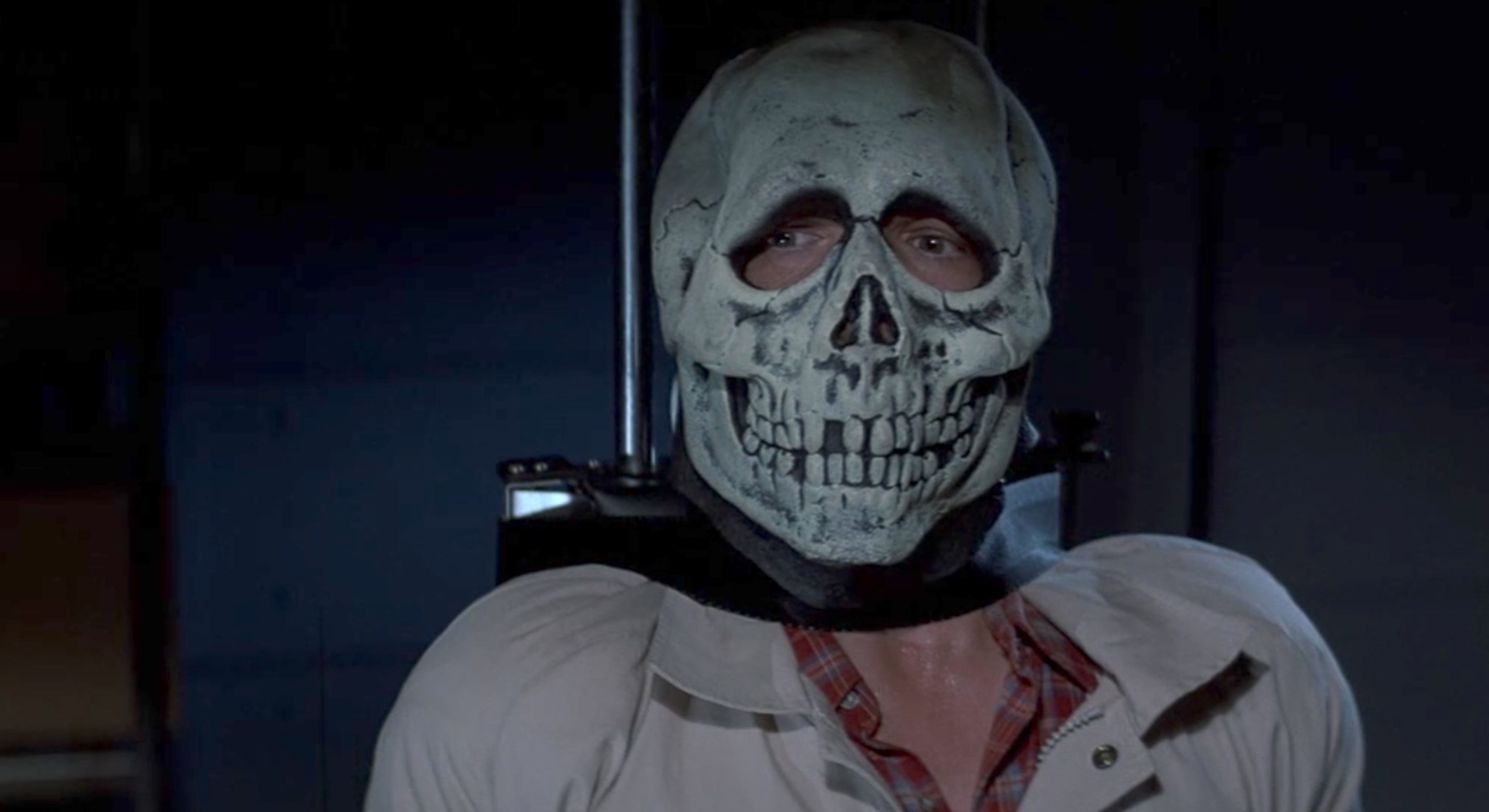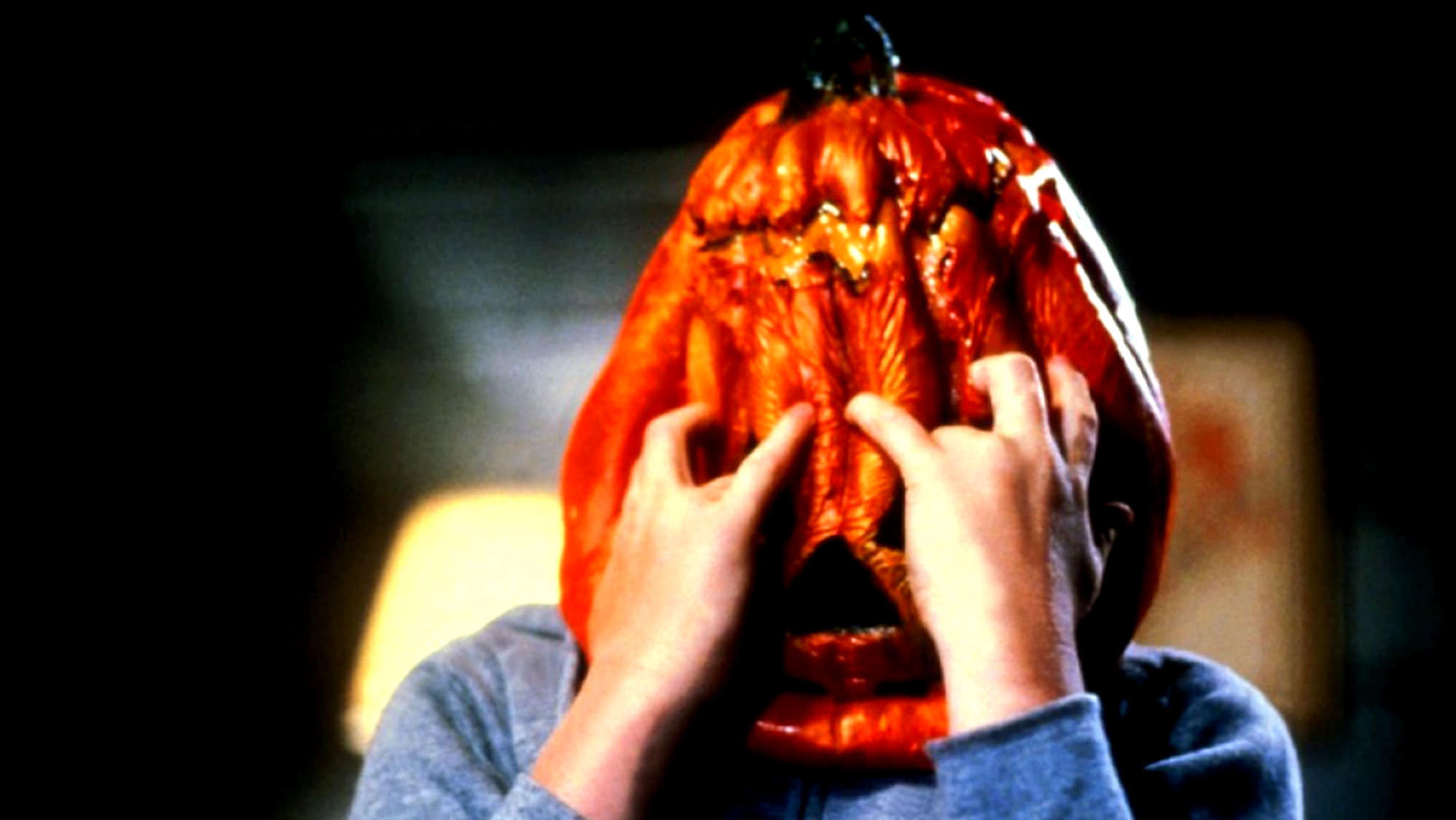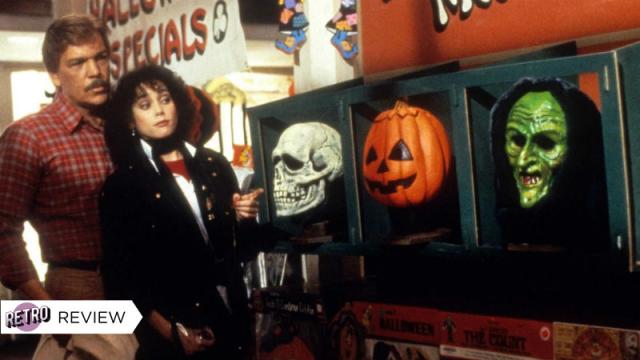Until recently, I’d never seen Halloween III: Season of the Witch. I know. Blasphemy. We all have our blind spots and this was one of mine. As I finally watched it though, I realised the movie I thought it was going to be wasn’t even close to the actual movie. How did that happen? Why? And what did I think of it all? Let’s get into it.
Released in 1982, Season of the Witch was John Carpenter and Debra Hill’s attempt to make the Halloween franchise not specifically about Michael Myers, but an anthology series centered on the holiday itself. As a result, Myers appears briefly, but only in footage from the original movie, which is also a movie in this world. In the end, the experiment failed, the movie didn’t do well, and Myers returned to the franchise a few years later, never to leave again.
[referenced id=”1423093″ url=”https://gizmodo.com.au/2020/09/all-11-halloween-movies-so-far-ranked/” thumb=”https://gizmodo.com.au/wp-content/uploads/2020/09/09/njdhlamxqmmukou5mpcb-300×169.jpg” title=”All 11 Halloween Movies (So Far), Ranked” excerpt=”We are more than ready for an early Halloween this year, and what better way to prepare than by ranking all of the movies (so far) spawned by John Carpenter’s 1978 slasher masterpiece?”]
As a kid who grew up on all the iconic slashers, the lack of Michael deterred me from Season of the Witch. In the near 40 years since there were a few things I did know about the movie: one, it didn’t have Michael; two, despite that, some fans consider it the best in the Halloween franchise; and three, it featured kids in Halloween masks.
That third point is where it all went wrong for me. You see, having not seen the movie, my basic understanding of the film came from pieces of pop culture art I’d seen based on it. Art like these pieces by Tom Whalen or Dave Perillo. Art that showed three kids, in Halloween masks, walking around.

Those images led me to believe Season of the Witch was about three kids in Halloween masks killing people. Precursors to Chuckie. Homages to the young Michael in the original film. Almost Lock, Shock, and Barrel from The Nightmare Before Christmas, but in an actual horror movie. Of course, I now know that is not what the movie is at all. But the fact that I’d created an alternate version of the film based on its pop-culture representation seemed noteworthy.
In reality, Season of the Witch is less a horror movie and more a detective mystery. It follows Dan Challis (Tom Atkins), a doctor whose patient dies mysteriously and gruesomely, who then decides to investigate it along with the patient’s daughter, Ellie (Stacey Nelkin). The investigation takes them to the remote town of Santa Mira, California, the home of a toy company called Silver Shamrock. It’s days before Halloween and Silver Shamrock makes the most popular Halloween masks in the world. Once there, not all is as it seems and Dan and Ellie uncover a sinister plot involving this year’s masks.
If it wasn’t for its link to the larger franchise, it’d be hard to call Season of the Witch a horror movie. The main “horror” moments in the film are when the Silver Shamrock employees gouge out the eyes or pop the heads off their victims. The scariest moments are the ones where Dan and Ellie get romantic because their chemistry is completely nonexistent, and age difference so large.

That it’s relatively tame for horror movies of the time isn’t necessarily a bad thing though. Subverting those expectations in place of a larger, supernatural mystery has some merit. The way director Tommy Lee Wallace seeds the unforgettable Silver Shamrock jingle throughout is particularly effective and almost Pavlovian. The slow, steady build of weird occurrences, from a man lighting himself on fire to an entire town wired up with video surveillance, keeps the audience interested and guessing. Obviously, the movie is cheesy as hell but everything going on keeps you completely engaged, even if you’re hoping for a little more action, scares, or gore.
Me personally? I just kept waiting for these masks to start taking over the kids so they’d go on a huge killing rampage (which, come on, would have been awesome). Instead, after about an hour of fairly monotonous, albeit entertaining, plotting, the action finally starts to pick up and you learn the real plan: for kids all over the world to go in front of their TV sets at 9 p.m. on Halloween night, in their masks, and for a coded TV commercial to set off a microchip in the masks and kill them. Basically, the company wants to kill all the kids in the world for some general, weird, sacrifice.
This is where I’m really going to explore both because it’s the crux of the whole movie and also because, well, it’s incredibly dumb. Some of the dumb things are covered in the film though. For example, it’s mentioned that the owner of Silver Shamrock, Mr. Cochran (Dan O’Herlihy), is one of the richest men in the world. So submarining his company, life, and town by killing all the kids in the world for a purpose greater than money sort of makes sense. I also get that it’s the early 1980s, movies aren’t readily accessible, so asking kids to watch a popular movie on TV on Halloween night and wait for the “big giveaway” after isn’t a stretch either. I’m also totally fine with the super random idea that Silver Shamrock stole a magical rock from Stonehenge to help with these rituals. That’s idiotic, but so is the movie.

First of all, why just the three masks? They really expect all the kids in the world to all dress in the same few masks? What about the kids who want to be princesses, baseball players, or Star Wars characters? It feels like by just doing three scary masks, you’re seriously limiting your kid-killing potential. (In the movie, everyone is wearing one of those masks though so I guess that doesn’t matter.)
My second gripe has to do with time zones. Once the movie gets to Halloween day, the film very purposefully shows kids all over the United States wearing the masks. If the “big giveaway” is at 9 p.m., wouldn’t it hit the East Coast first? If so, by the time Dan figures everything out in California, shouldn’t these kids dying be all over the news? Since there’s literally no reason why the movie has to be set in California, just changing the location to New Jersey or something would’ve solved this problem. Also, it’s Halloween, we assume kids are going to trick or treat, especially at night. If the giveaway is at 9 p.m., after a TV broadcast of Halloween, one can deduce the movie started at 7 p.m. Lack of movie accessibility and prime time TV ad rates aside, doesn’t starting the movie at 7 p.m. cut into trick or treating which, again, probably means fewer kids are watching? Start it at 10 p.m. and do the giveaway at midnight! Midnight is scarier anyway! (Though, it’s probably past the bedtimes of many smaller kids and oh, god why am I still going?)
I fully, and gladly, admit these are very stupid, very nitpicky complaints. But they were all I was thinking about as the fantasy of my killer kid movie began to vanish into the reality of a movie not-so-thinly veiled as a commentary on the commercialism of holidays and evils of mass media. We get it. Buying crap you see advertised on TV is bad for you. I’m all about social commentary in genre film but this one just seemed a little too on the nose.

Oh, and if that’s not enough, the film cuts off in a cliffhanger where we don’t find out if Dan was successful or not. You know, in the highly believable scene where he gets an important member of the TV network on the telephone and succeeds in them shutting down a massive broadcast because they should trust him, followed by kids who stopped at a gas station watching TV. None of that makes a lick of sense. I’m all for ambiguity, but in this case, it feels like such a cop-out to this hair-brained scheme we’d been watching unfold for 90 minutes. If Silver Shamrock was going to win, let’s see them win. If Dan was going to succeed, let’s see it. Not telling us either way doesn’t add anything except frustration.
At this point, you may be wondering “Did I dislike Season of the Witch because I imagined it being a different, hypothetically better, movie?” I’d be lying if I unequivocally said “Yes” or “No.” On one hand, expectations almost always have some kind of impact. On the other hand, even when I realised the movie wasn’t what I was expecting, I was with it for a long enough that I was ready for where it would take me. I gave it every chance imaginable. I wanted to love it, I just didn’t. Even if it was about three murderous kids possessed by masks, there’s certainly a chance I wouldn’t have liked it then either.
The fact of the matter is I saw Halloween III: Season of the Witch as an awkward detective story with sporadic horror elements, leading to a confusing conclusion that offers little satisfaction or thematic interest. Expectations or not, it’s just not very good. No wonder Michael Myers came back. At least that vapid presence was scary.

Assorted Musings:
- I just about died with Dan lies to his ex-wife about hanging out with Ellie, hangs up the phone, and we see that he’s purchased a six-pack of beer for the trip. I get that the film paints him as an alcoholic but this one instance is so deliberate and never pays off. Do they drink that whole six-pack on the road? Did they split it? I would like to see those deleted scenes.
- We know the Silver Shamrock masks are activated by a silver dollar sized logo on the back of them, which is hiding the killer technology. If I was a kid though, I would have immediately ripped that thing off. It was so cumbersome. Did they account for this? Or was having a Silver Shamrock mask like owning a Louis Vuitton bag?
- When Marge, the lady next door at Dan and Ellie’s hotel, discovers the microchip and is killed, it’s called a “misfire.” Which, we assume, means a misfire of the laser that killed her. But I didn’t get how the lasers factored in at all. Do the lasers go into the kid’s heads to kill them? What do those lasers have to do with the one that kills Cochran at the end?
- Is everyone (aside from that one random transient that Dan meets) in Santa Mira in on this plan? They all sure trust Cochran and are absolutely OK with these androids running around. So did he promise them enlightenment or something? Are their kids going to be killed?
- Oh, right, androids. That was very cool. I liked that.
So many questions, so few answers. I leave you with this earworm, possibly the best and worst thing in the whole movie.
